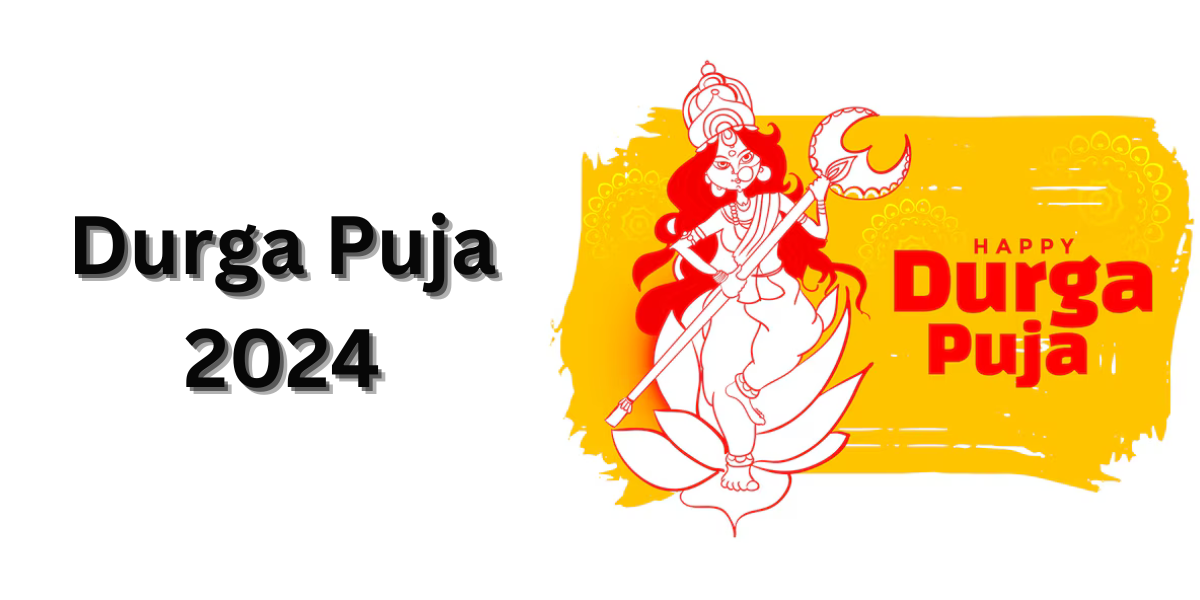Durga Puja, one of the most celebrated and culturally significant festivals in India, is eagerly awaited every year. In 2024, Durga Puja promises to be as grand and vibrant as ever, with communities coming together to honor Goddess Durga and rejoice in this festival of devotion, art, and culture. This festival, primarily observed in West Bengal, Assam, Odisha, and other parts of India, transcends regional boundaries and brings people from different walks of life together in celebration. Durga Puja 2024 is set to commence on October 11 and will culminate on October 15, marking five days of ritualistic worship, cultural performances, and joyous celebrations.
Significance of Durga Puja
Durga Puja is a celebration of the victory of good over evil. According to Hindu mythology, Goddess Durga, the embodiment of feminine power (Shakti), vanquished the demon Mahishasura, who threatened the balance of the world. The festival symbolizes the triumph of righteousness over evil forces, with Goddess Durga representing strength, courage, and compassion. During Durga Puja, people worship the various forms of the goddess, including Durga, Lakshmi, Saraswati, Ganesha, and Kartikeya, all of whom are depicted in beautifully crafted idols that adorn pandals (temporary structures for worship) across cities and towns.
Rituals and Traditions
The rituals associated with Durga Puja begin well before the festival. Artisans start creating intricate clay idols of Goddess Durga months in advance, often accompanied by prayers and blessings for prosperity. On Mahalaya, the day that marks the beginning of Durga Puja, devotees invite the goddess to descend from her celestial abode to Earth. This day is filled with rituals, including the chanting of mantras and the recitation of the Mahishasura Mardini, which recounts the story of Goddess Durga’s victory.
Durga Puja officially begins on the sixth day of Navratri, known as Shashthi. On this day, the goddess is welcomed into homes and pandals, and the idols are unveiled for worship. The following days—Saptami, Ashtami, and Navami—are marked by elaborate rituals, offerings, and cultural programs. The worship of Goddess Durga reaches its peak on Ashtami, with the Sandhi Puja, a powerful ritual performed at the juncture of Ashtami and Navami.
The final day of the festival, Vijaya Dashami, marks the departure of Goddess Durga from her earthly abode. The idols are taken in grand processions to rivers or seas for immersion, symbolizing the goddess’s return to her heavenly realm. Devotees bid farewell with mixed emotions, as the celebrations come to an end, but with the hope of her return the following year.
Durga Puja in 2024: What to Expect? And how will it be done?
Durga Puja in 2024 is expected to be grander than ever, with an increased emphasis on both traditional and contemporary cultural expressions. With advancements in technology and design, the pandals in cities like Kolkata, Mumbai, Delhi, and abroad are becoming more elaborate, often resembling architectural masterpieces. Some pandals are known to incorporate themes inspired by current events, mythology, art, and history. In 2024, we can anticipate unique and creative pandals that not only serve as places of worship but also as platforms for artistic expression.
Cultural performances during Durga Puja are another highlight of the festival. Dance, music, drama, and traditional plays are performed in pandals and community halls, attracting large crowds. Artists from across the country come to showcase their talent, while local communities organize events that reflect the rich heritage of Bengal and India. Durga Puja 2024 will likely feature a variety of cultural events, from classical music recitals to contemporary dance performances, making it a melting pot of traditions and modernity.
In recent years, there has also been a focus on making Durga Puja more eco-friendly. Organizers have begun using biodegradable materials for idol-making and promoting sustainable practices in pandal decoration. In 2024, this trend is expected to continue, with more pandals opting for eco-friendly celebrations to reduce environmental impact.
PROCEDURES FOR WORSHIP
| Day | Goddess Name | Procedure of Worship |
| Mahalaya | Goddess Durga (Nabapatrika) | – Tarpan: Devotees perform Tarpan (offering water) to their ancestors.- Chanting: Recitation of Mahishasura Mardini to invite the goddess. |
| Shashthi | Goddess Durga | – Bodhon: The ceremonial welcome of the goddess with rituals and offerings.- Boron: Placing the idol of Durga in the pandal, adorned with flowers and ornaments.- Anjali: Offering rice and flowers to the goddess. |
| Saptami | Goddess Durga | – Nabami: The first day of the main puja. Offerings of fruits and flowers are made.- Kola Bou: The ritual of placing a banana plant (symbolizing the bride) next to the idol.- Anjali: Devotees offer prayers and rice (Anjali) to the goddess. |
| Ashtami | Goddess Durga | – Maha Ashtami: The most significant day of the puja.- Sandhi Puja: Performed at the juncture of Ashtami and Navami, invoking the goddess with special rituals.- Anjali: Offering of flowers and fruits to the goddess.- Bodhon: Recitation of the Durga Saptashati or Chandi Path. |
| Navami | Goddess Durga | – Navami Homa: A fire ritual performed to seek blessings from the goddess.- Pushpanjali: Offering of flowers to the goddess, along with prayers.- Bhog: Distribution of prasad (food offerings) to devotees. |
| Vijaya Dashami | Goddess Durga | – Visarjan: Immersion of the idol in water, symbolizing the goddess’s return to her celestial home.- Bidaai: Farewell to the goddess with emotional prayers and rituals.- Sindoor Khela: Married women apply vermillion to the goddess before immersion. |
Detailed Procedures for Worship
- Mahalaya (Invoking the Goddess)
- Tarpan: Devotees perform rituals for their ancestors, offering water to invoke blessings.
- Chanting: Recitation of Mahishasura Mardini, invoking the goddess’s arrival.
- Shashthi (Welcoming the Goddess)
- Bodhon: The idol is ceremonially welcomed, accompanied by chanting of mantras.
- Boron: The idol is adorned with flowers and ornaments, symbolizing the arrival of the goddess.
- Anjali: Devotees present offerings of rice and flowers to the goddess as a gesture of reverence.
- Saptami (First Day of Main Worship)
- Nabami: Rituals include offering fruits and flowers to the goddess.
- Kola Bou: A banana plant is placed beside the idol, representing the bride.
- Anjali: Devotees offer prayers and rice to the goddess.
- Ashtami (Maha Ashtami)
- Sandhi Puja: Special rituals performed at the juncture of Ashtami and Navami.
- Anjali: Devotees offer flowers and fruits, along with prayers.
- Bodhon: Recitation of Durga Saptashati or Chandi Path to honor the goddess.
- Navami (Final Day of Worship)
- Navami Homa: A fire ritual is conducted to invoke blessings from the goddess.
- Pushpanjali: Offerings of flowers are made, accompanied by prayers.
- Bhog: Devotees receive prasad (food offerings) distributed from the goddess’s blessings.
- Vijaya Dashami (Farewell to the Goddess)
- Visarjan: The idol is immersed in water, symbolizing the goddess’s return to her celestial abode.
- Bidaai: Emotional farewells are offered to the goddess through rituals and prayers.
- Sindoor Khela: Married women apply vermillion to the goddess before her immersion.
This schedule provides a comprehensive overview of the worship of Goddess Durga during Durga Puja, reflecting the rituals, offerings, and emotional connections devotees share with the goddess.
Global Celebrations
While Durga Puja is most prominent in India, it has a significant global presence, especially in countries with large Bengali and Indian communities such as the United States, United Kingdom, Canada, and Australia. Durga Puja 2024 will see grand celebrations in cities like London, New York, and Sydney, where expatriates come together to celebrate their cultural heritage. These global events mirror the grandeur of celebrations in Kolkata, complete with traditional rituals, cultural performances, and authentic Bengali cuisine.
FAQs
1. When is Durga Puja 2024?
Durga Puja in 2024 will start on October 11 and end on October 15, with Vijaya Dashami taking place on the final day.
2. What is the significance of Durga Puja?
Durga Puja celebrates the victory of Goddess Durga over the demon Mahishasura, symbolizing the triumph of good over evil. It is a festival that honors the feminine power and divinity of the goddess.
3. Where is Durga Puja celebrated?
Durga Puja is primarily celebrated in West Bengal, Assam, Odisha, and Bihar, but it has also gained popularity in other parts of India and globally in countries with large Indian communities.
4. What are the key rituals of Durga Puja?
Key rituals of Durga Puja include the unveiling of the idols on Shashthi, the worship of Goddess Durga on Saptami, the Sandhi Puja on Ashtami, and the immersion of the idols on Vijaya Dashami.
5. How has Durga Puja evolved in recent years?
In recent years, Durga Puja has evolved to include more elaborate pandals, eco-friendly practices, and global celebrations. It has also become a platform for artistic and cultural expression, blending tradition with modernity.
6. What are some popular cultural events during Durga Puja?
Cultural events during Durga Puja include traditional dance and music performances, theater, poetry recitations, and exhibitions of art and crafts. These events reflect the rich cultural heritage of Bengal and India.
7. How can I participate in Durga Puja if I live outside India?
Many Indian communities abroad organize Durga Puja celebrations in cities like New York, London, and Sydney. You can participate by attending local pandals, joining cultural events, or taking part in online live-streamed pujas.
Conclusion
Durga Puja 2024 promises to be a grand celebration, filled with devotion, cultural events, and artistic splendor. As one of the most important festivals in India, it unites people from all walks of life, creating a sense of community and shared joy. Whether you are in Kolkata, Mumbai, or living abroad, the spirit of Durga Puja transcends boundaries, connecting individuals through their devotion to Goddess Durga and their love for tradition.
As the world continues to change, Durga Puja has embraced modernity while staying rooted in its rich history and spiritual significance. With growing awareness of environmental concerns, Durga Puja in 2024 is expected to continue the trend of sustainable celebrations, ensuring that the festival remains not only culturally relevant but also ecologically conscious. Whether you are witnessing the grand pandals in Kolkata or participating in a local celebration abroad, Durga Puja 2024 is sure to be a memorable experience filled with devotion, artistic brilliance, and joy.
Read More Blogs


